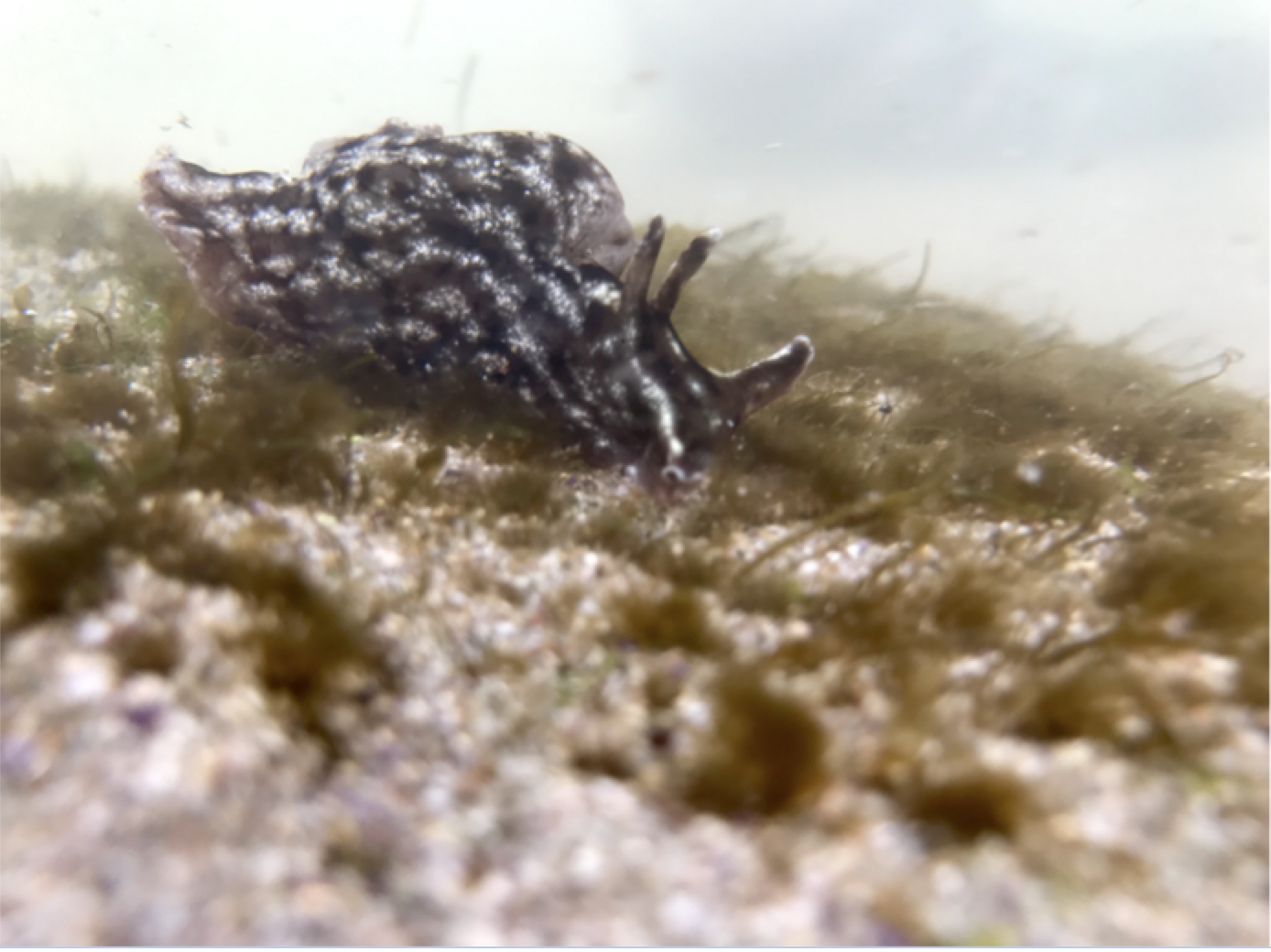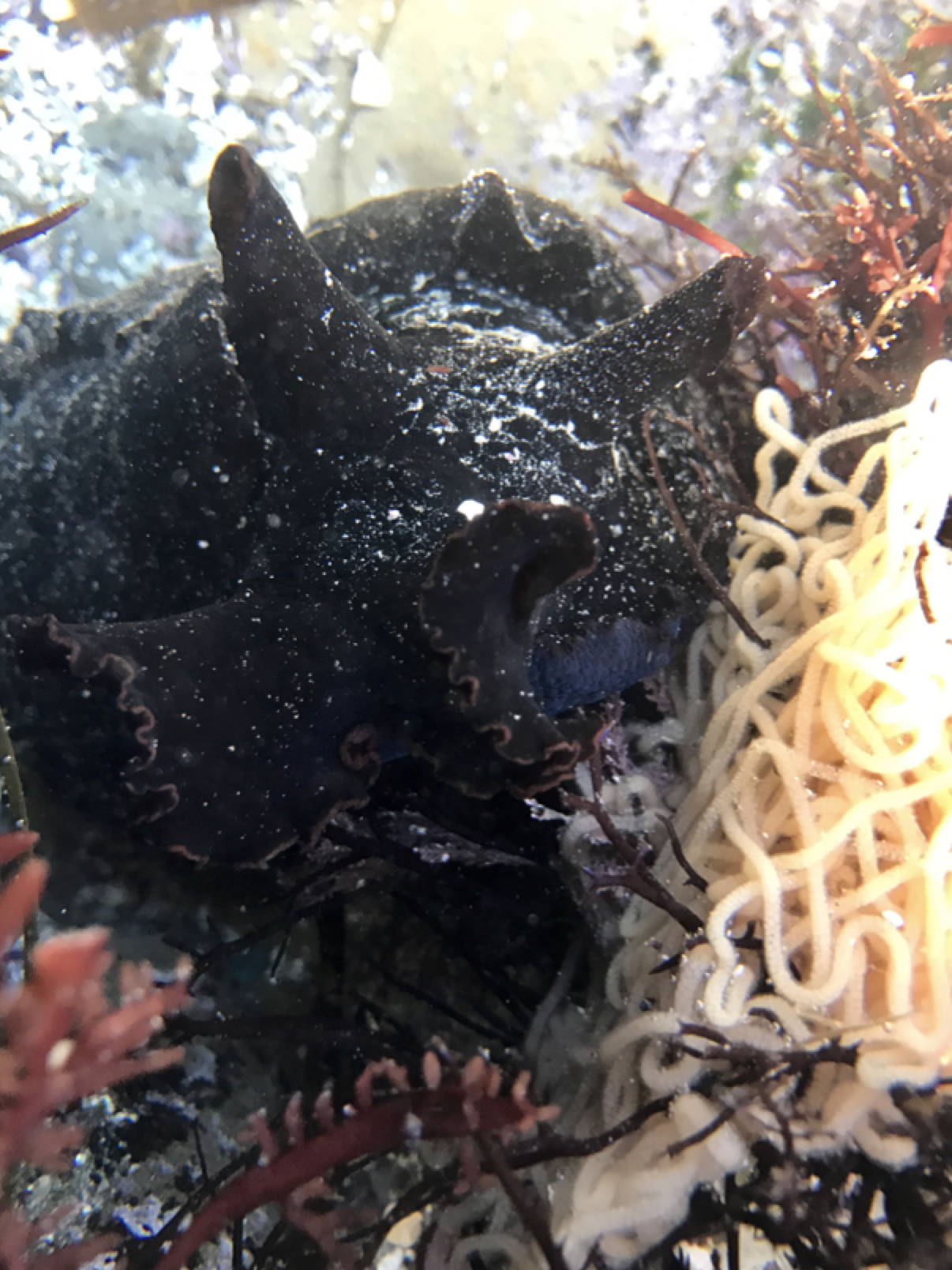
Caption: Aplysia californica, more commonly known as the California Brown Sea Hare. As their name states, is native to the California coast and into Mexico.
This sea slug gets its name from the pair of tentacle-like extensions, or rhinophores, on top of its head that resemble a hare or rabbit. These rhinophores are used for detecting its next scrumptious meal. Being herbivores, they tend to search for the ripest algae and utilize their toothed radula to slowly consume the ridged marine plants. Uniquely, the juvenile sea hares tend to live in deeper water (up to 60 ft), where they eat mostly red algae. As they age, they migrate to shallower waters to eat tougher brown and green algae, as seen at Cabrillo. California Sea Hare’s can grow to 16 inches and weigh as much as 5 lbs. Their diet is very important to their survival in that certain chemicals are extracted from their algal snacks to generate ink and to change their physical appearance.
Unlike other sea hares, this species can ward off predators by expelling a thick cloud of purple ink that is distasteful and irritating. The ink is generated by physiologically separating chemicals from red algae, also known as secondary metabolites. If the ink-generated smoke screen is not enough, this species of sea hare also fluctuates in physical appearance based on their diet. They tend to resemble the algae in which they eat the most, giving them the ability to camouflage during dinner time from reddish-brown to greenish-brown. Next time you are in the tidepool area at Cabrillo National Monument, make sure to keep an eye out amongst the algae for our sea bunnies.

Caption: Pictured here is Aplysia californica with its egg mass, the noodle-like strings. During their mating season (spring-summer), these marine animals lay an egg mass that contains about 80 million potential sea hares. In 10-12 days, this mass darkens and releases free swimming planktonic larvae. Within a month’s time, the larvae set on algae, where they gorge, doubling their weight every 10 days for the next 3 months. On average, this species is known to live for approximately 1 year.
Why do we care about the California Brown Sea Hare? Yes, they are adorable and mesmerizing to watch. However, they are beneficially used in a variety of research, including neurobiology, cancer research, and the study of sex hormones. These animals have some of the largest neurons in the animal kingdom and very few of them. This makes it possible for scientists to identify individual nerve cells that are associated with a specific behaviour. They also are hermaphroditic, meaning they have the ability to change their sex from male to female or simultaneously both. Yet, they do not self-fertilize, making their sex hormones interesting amongst researchers.
Sources:
Aquarium of the Pacific. 2014. “California Brown Sea Hare”. Aquarium of the Pacific. http://www.aquariumofpacific.org/onlinelearningcenter/species/california_brown_sea_hare.
